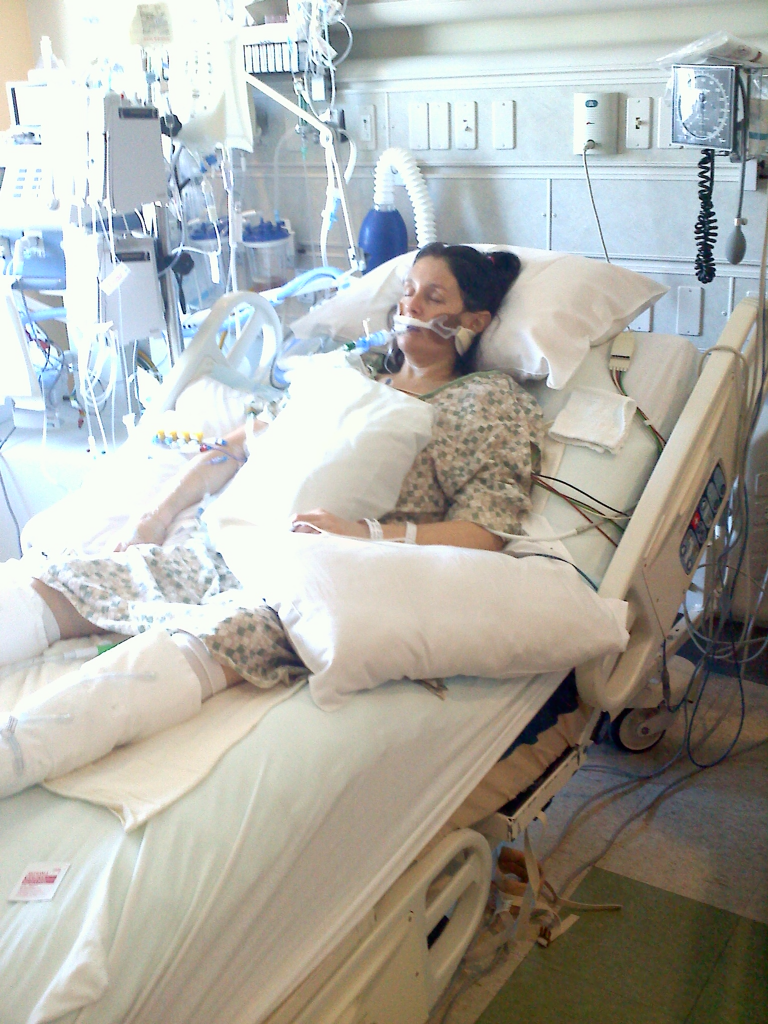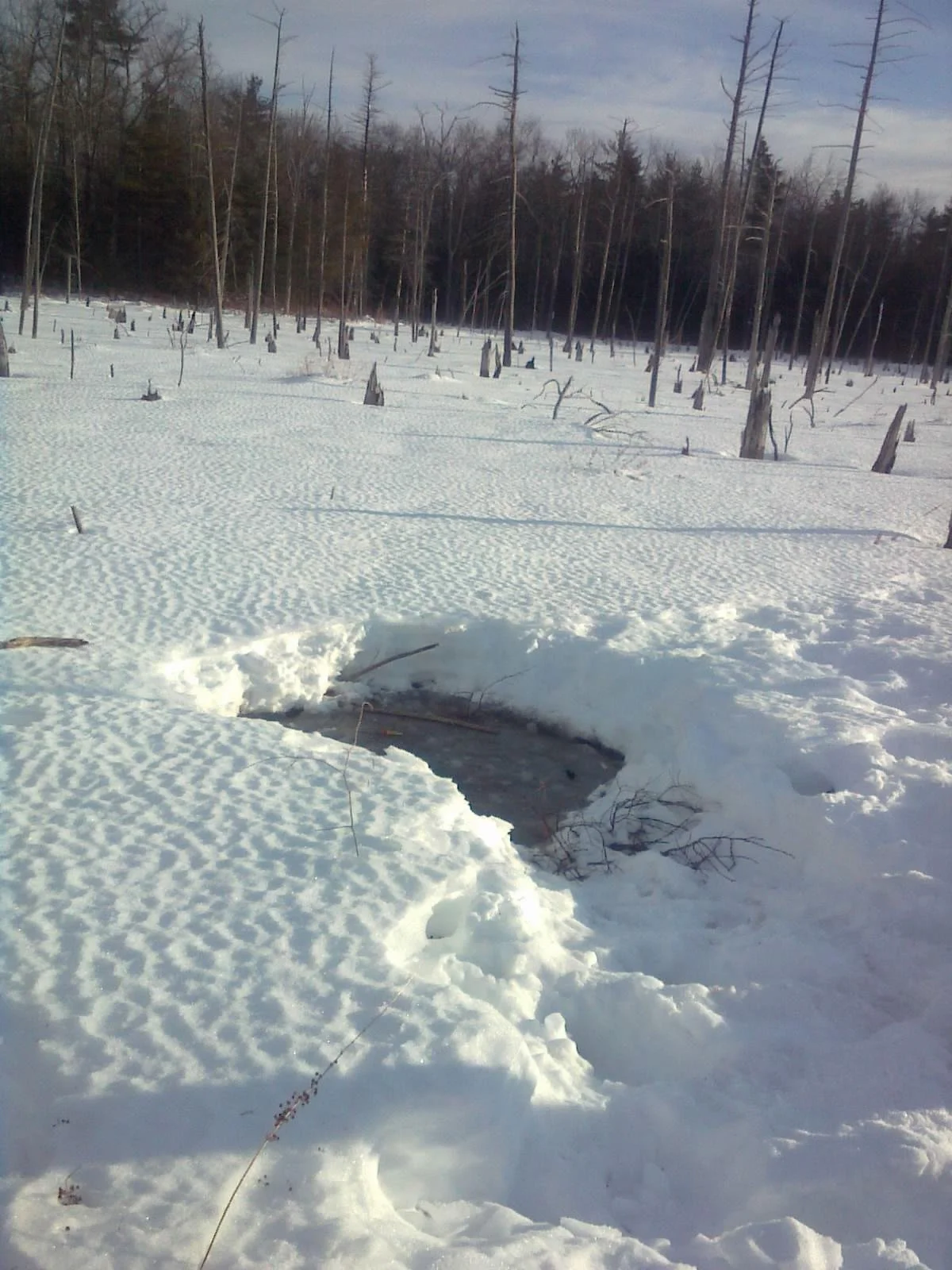An American Beaver and a Tale of Profound Hypothermia
Disclaimer: This post may contain distressing content; reader discretion is advised
You may be curious about the title of this blog. How can a beaver be involved in a profound hypothermic event?! It is a remarkable story of perseverance and recovery.
Parallel themes of endurance run through the journey of these industrious rodents, once nearly extirpated from New England and now reestablished to healthy populations, and my miraculous determination to survive a profound hypothermic accident, tapping into the resilient human spirit we all harbor inside.
American beavers, dubbed “nature’s engineers”, create critical new wetland habitat for countless species of insects, birds, fish and mammals by damming up streams and flooding nearby woodlands.
The multi-chamber lodge can be constructed on the banks of the newly formed pond, or in the interior, where water surrounds the solid mud and stick structure, much like a moat protected ancient castles.
As a keystone species (keystones are those species who define an entire ecosystem) beavers remain active all year, becoming “busy as a beaver” in the late fall, cutting, hauling and submerging branches into the mud adjacent to their lodge.
Once ice forms, the monogamous pair access these cached or stored food sources from underwater entrances in the lodge. Adequate food supplies for the two adults and several young from the previous spring, must be secured for the entire winter, as beavers cannot break through ice to forage on shore. They coat their thick, insulating pelts with a waterproofing oil. Once prized for their fur, they were trapped and traded to the point of near extinction in many regions of North America.
I have always been fascinated with these amazing mammals, marveling at the adaptations which enable this herbivore to survive months under the ice, in frigid water. In the woods behind my home, a 14-acre beaver pond became a place of exploration and observation for the curious naturalist in me. Several lodges had been constructed over decades, resulting in a vibrant wetland.
In the winter of 2011, bitter temperatures had formed thick black ice, giving me the opportunity to explore the pond on snowshoes, using sharp cleats for traction. In mid-January, I was mesmerized watching a large beaver, nicknamed “Leviathan” glide directly under me on his way into the massive lodge. Little did I know within a few weeks, I would be “swimming” next to him!
On February 13th, in midafternoon, I set off on snowshoes, following the route I had blazed across the now snow-covered pond. Six days later, I awoke from a coma in the ICU, finding myself on a ventilator, multiple IV ports pumping medications into my body, having no idea why I was in the hospital.
ICU room at Catholic Medical Center
I had fallen through a patch of thin ice, near that large beaver lodge. Trapped in a neck-deep hole of icy water, for several hours, with a foot of snow on the surface, I was not able to get out. When darkness descended, and I had not returned home, my husband, with urging from our two young daughters, set out to find me.
David swept his flashlight across the pond, calling my name. Following the faint moans, he finally arrived at a location where he saw me submerged in the dark water. Fortunately, he had called for help when he suspected something was seriously wrong, quickly following up with another call about the water.
He bellied over to the hole and clutched my winter jacket from behind to help keep my head above water. Within ten minutes I slumped into unconsciousness. Rescue crews arrived, suited for an ice water extraction. My pulse was faint and thready but still present. Wrapped in blankets, strapped onto a backboard and carried twenty-five minutes through the snowy trail to an ambulance waiting in my driveway, my family had hope. However, I had gone into cardiac arrest somewhere along that trek.
Spot where Kelly fell though the thin ice.
Rescue team footprints on 12” thick ice adjacent to lodge.
CPR was started and continued for over three hours. At the first hospital, external warming measures were taken. My core body temperature was in the 60’s. No heartbeat. Multiple defibrillation attempts. Still no heartbeat.
At a nearby major trauma center with a heart-lung machine used for bypass surgery, a team was assembled in a desperate attempt to warm my core and restart my heart. Upon arriving in the operating room, no brain activity was detected. Manual CPR continued until I was hooked up to this machine which aggressively warmed, filtered and oxygenated my blood. Pond water and mud were siphoned from my lungs, and slowly my oxygen levels and core temperature started to respond.
At 92 degrees, my heart resumed beating on its own, shocking the surgical team. Sedated and ventilated, I was taken to an ICU room where I remained in a coma, fighting pneumonia. My family kept a vigil in my room. The likelihood of my survival was extremely low. The odds of no permanent organ and brain damage, if I even survived, were even lower. Astronomically low.
Multiple scans, tests, and blood draws over the next several days gave my family a faint glimmer of hope. As soon as the sedation medication was turned down, a neurologist watched me trying to communicate to my husband through the ventilator, answering questions about the Lyme medication I was taking. He signed off on me, assuring my anxious family there would be no brain damage if I could recall the complicated antibiotic names I had started taking to treat Chronic Lyme!
Within a few days, the ventilator was removed, IV ports resembling power strips taken out and I was allowed out of bed. Standing was painful, but I was determined to walk, albeit slowly, as my muscles had atrophied that week in a coma.
After twelve days in the ICU, I was discharged home, with nerve damage to my hands and a small crack in my sternum from the hours of CPR. I was alive, with absolutely no memory of my “swim” with the big beaver, Leviathan. National news covered the story of the “Miracle Woman”, who beat all the odds to survive.
Almost thirteen years later, my hands have regained most of their function and no memory of the horrors of struggling for hours in that dark, icy water have returned. My boots and snowshoes remain at the bottom of the pond, right where I somehow got them off my feet. My family jokes they are in the beaver lodge, a curious object to the young beavers that winter who wondered why their parents seemed so agitated with the “swimmer” right outside!
I like to think that big beaver kept swimming out to his cached food pile, brushed against my submerged body and startled me enough to raise my head above water, continuing the fight for my life. Never giving up. The first responders and rescue personnel never gave up. Medical teams and my family never gave up.
My resilience and determination are part of the human spirit. Something we all have within us. Nature has a resilience which enable habitats to heal and species to recover and thrive. Just like the American beaver has been able to do and continue creating spectacular and vital ecosystems for hundreds of other animals.
Today I remain grateful for the second chance at life and for the people who saved me. I also remain in awe of the perseverance and ingenuity of this large rodent, the American beaver.
Kelly, fully recovered and grateful!
Still enjoying winters!



